Wakefulness Alternative Finder
Find Your Perfect Wakefulness Support
Answer a few questions to discover which wakefulness option best matches your needs.
Your Recommended Options
Key Considerations
Quick Takeaways
- Modaheal (Modafinil) is a prescription wake‑promoting drug with a 12‑hour alertness window.
- Armodafinil offers a slightly longer half‑life and may cause fewer night‑time side effects.
- Adrafinil is a pro‑drug that converts to Modafinil in the liver, but it can stress the kidneys.
- Over‑the‑counter options like caffeine, L‑theanine or Rhodiola work for mild fatigue but lack the potency of prescription agents.
- Choose based on required duration, side‑effect tolerance, legal status in your country, and budget.
What is Modaheal (Modafinil)?
Modaheal (Modafinil) is a synthetic eugeroic approved for narcolepsy, shift‑work sleep disorder, and obstructive sleep apnea‑related sleepiness. It boosts wakefulness without the jittery spike typical of stimulants.
Typical doses range from 100mg to 200mg once daily, taken in the morning. The drug reaches peak plasma levels in about two hours and has an elimination half‑life of 12‑15hours, meaning most users feel alert for a full workday.
How Modafinil Works
Modafinil’s exact mechanism isn’t fully mapped, but it primarily increases extracellular dopamine by blocking the dopamine transporter (DAT). It also nudges histamine, orexin, and norepinephrine pathways, creating a broad wake‑promoting effect without strong cardiovascular stimulation.
Key Criteria for Comparing Alternatives
When you weigh Modafinil against other compounds, keep these factors in mind:
- Efficacy: How much does it lift alertness and cognitive performance?
- Duration of Action: Does it cover a full 8‑hour shift, a 12‑hour workshop, or just a coffee‑break?
- Side‑Effect Profile: Headache, insomnia, anxiety, liver impact, etc.
- Legal & Prescription Status: Prescription‑only, over‑the‑counter, or banned in certain regions.
- Cost & Accessibility: Price per milligram, insurance coverage, online pharmacy availability.
Prescription‑Only Alternatives
These drugs require a doctor’s script in most countries but are often discussed alongside Modafinil for their similar wake‑promoting qualities.
| Drug | Typical Dose | Half‑Life | Key Benefits | Common Side‑Effects |
|---|---|---|---|---|
| Armodafinil | 150mg once daily | 15‑16hours | Longer‑lasting alertness; may reduce evening insomnia | Headache, nausea, dry mouth |
| Adrafinil | 600mg-1200mg in the morning | Not applicable (pro‑drug) | Legal in many OTC markets; converts to Modafinil in the body | Liver enzyme elevation, occasional heart palpitations |
| Pitolisant | 10‑40mg once daily | 15‑20hours | Histamine‑based wakefulness; low abuse potential | Insomnia, anxiety, dyspepsia |
| Solriamfetol | 75‑300mg once daily | 6‑7hours | Rapid onset; useful for excessive daytime sleepiness | Decreased appetite, anxiety, increased blood pressure |
Armodafinil (often sold as Nuvigil) is essentially the R‑enantiomer of Modafinil, giving it a slightly longer half‑life and potentially smoother evening wear‑off. Adrafinil is popular among DIY‑nootropic users because it can be bought without a script, but the liver‑processing step adds a health consideration.
Over‑the‑Counter & Supplement Options
If you need a milder boost or cannot get a prescription, these non‑prescription options are the most talked‑about.
| Substance | Typical Dose | Duration | Strength of Alertness | Side‑Effects |
|---|---|---|---|---|
| Caffeine | 100mg-200mg (≈1 cup coffee) | 3‑5hours | Modest - lifts focus and reduces fatigue | Jitters, increased heart rate, possible insomnia |
| L‑Theanine | 100mg-200mg | 4‑6hours | Calm focus - often paired with caffeine | Rare; mild headache |
| Rhodiola Rosea | 200mg-400mg standardized extract | 6‑8hours | Adaptogenic stamina boost | d>Dry mouth, dizziness (high doses)|
| Nicotine Gum (2mg) | 1 piece every 1‑2hours | 2‑3hours | Sharp alertness, appetite suppression | Dependence risk, throat irritation |
Most people stack caffeine with L‑theanine for a smoother rise‑and‑fall curve-think “focus coffee.” Rhodiola works best when taken consistently for a week or two, as its adaptogenic effects build up. Nicotine should be a last resort due to addiction potential.
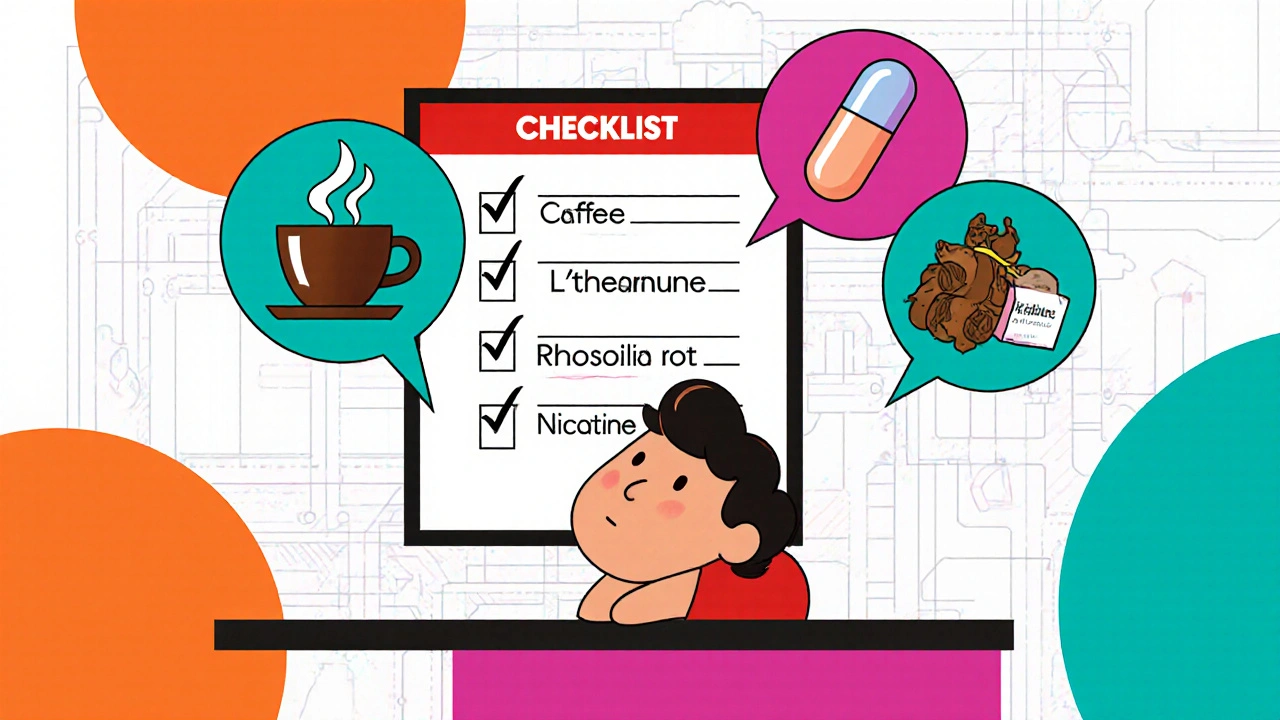
Emerging Nootropic Alternatives
Research labs and bio‑hackers are testing newer molecules that aim to match Modafinil’s wakefulness without prescription barriers.
- Sunifiram - a potent AMPA‑kainate receptor modulator; anecdotal reports claim strong cognition boost at microgram doses, but safety data is scarce.
- Fasoracetam - a racetam family member; may improve focus and reduce anxiety, with a half‑life of about 12hours.
- Coluracetam - enhances choline uptake; users report improved visual perception and mild alertness.
These compounds are typically sourced from research‑chemical vendors, so legality varies by jurisdiction. Because long‑term studies are lacking, they’re best approached with caution.
Decision Checklist - Which Alternative Fits You?
- Need for Full‑Day Wakefulness? Choose Modafinil or Armodafinil.
- Prescription Barriers? Adrafinil (watch liver labs) or OTC stack of caffeine + L‑theanine.
- Budget‑Sensitive? Caffeine (~$0.10 per cup) beats prescription costs that can exceed $200 per month.
- Concern About Side‑Effects? Pitolisant has a low abuse profile; L‑theanine has minimal adverse events.
- Legal Restrictions? Verify your country’s schedule; many nootropic research chemicals fall into gray zones.
By answering these questions, you can narrow down from a dozen possibilities to the one that matches your schedule, health profile, and risk tolerance.
Frequently Asked Questions
Is Modaheal (Modafinil) safe for long‑term use?
Clinical data up to two years show it’s generally well‑tolerated, but some users develop headaches, insomnia, or mild mood changes. Regular liver function tests are advisable for anyone on daily therapy.
Can I buy Modafinil without a prescription?
In most countries it’s a ScheduleIV prescription drug, so buying it off‑label online carries legal risk. Some online pharmacies claim “no prescription needed,” but the product may be counterfeit.
How does Armodafinil differ from Modafinil?
Armodafinil is the R‑enantiomer of Modafinil, giving it a slightly longer half‑life (15‑16hours) and potentially smoother evening profiles. Efficacy appears comparable in most head‑to‑head trials.
Are caffeine and L‑theanine a good replacement?
For mild fatigue they work well-caffeine provides the boost, L‑theanine tempers jitteriness. They won’t match the sustained alertness of prescription eugeroics, but they’re cheap and safe for most adults.
What lab tests should I monitor when using Adrafinil?
Because Adrafinil metabolizes into Modafinil in the liver, periodic liver function panels (ALT, AST, bilirubin) are recommended every 3‑6months, especially at doses above 800mg.
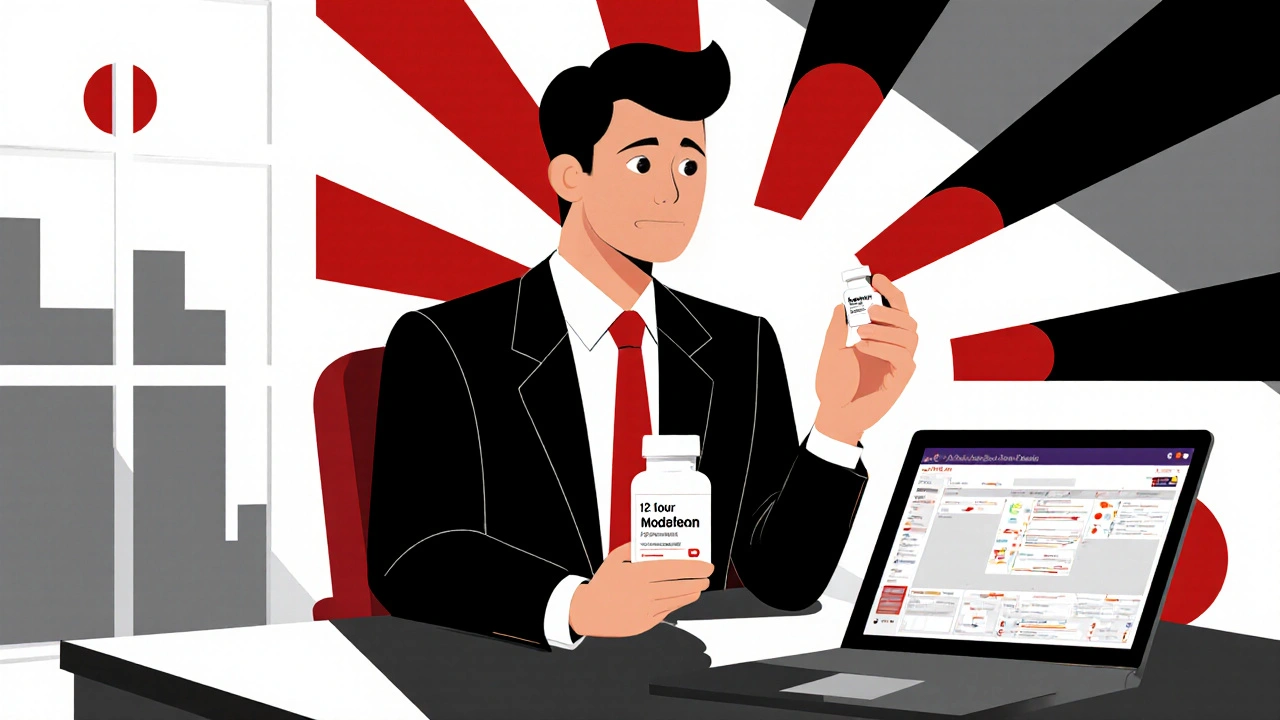
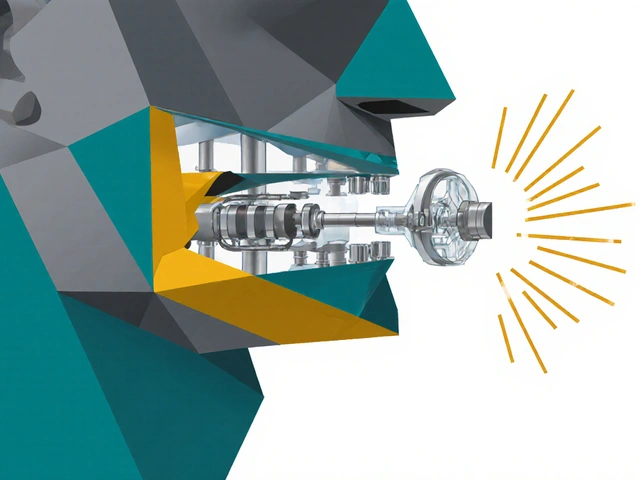
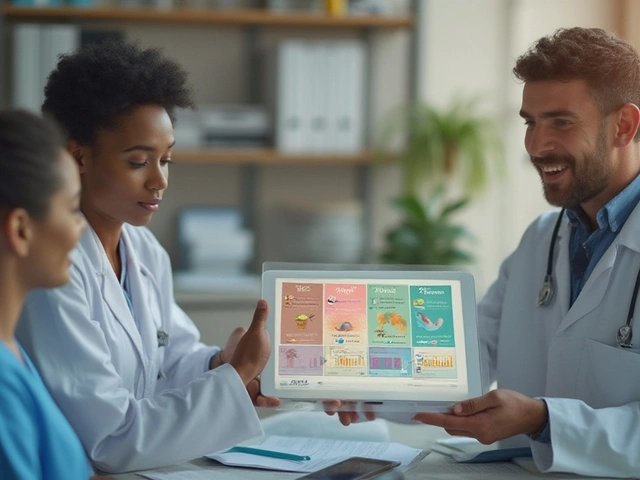


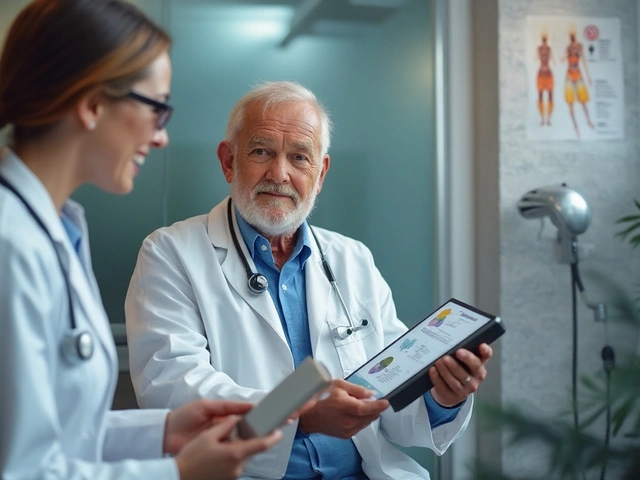
Don't be fooled-Modaheal is just the government's way of keeping us wired like lab rats.
October 17Patricia Echegaray